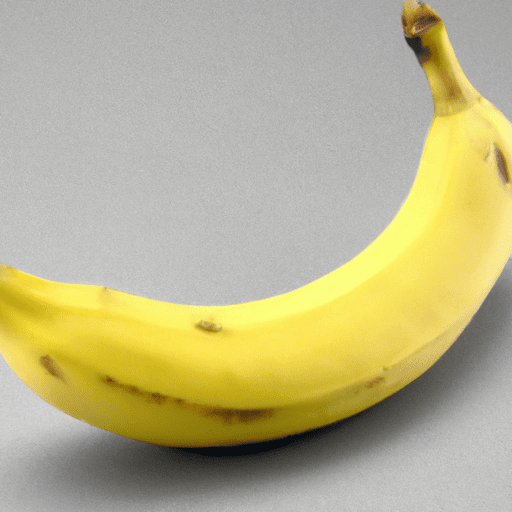All You Need to Know About Bananas: A Versatile and Nutritious Fruit
Bananas are a beloved fruit that are not only delicious but also incredibly versatile in the kitchen. Whether enjoyed on their own, used in baking, or incorporated into savory dishes, bananas offer a multitude of possibilities. In this blog post, we will explore the taste, common uses in cooking, nutritional value, and interesting history and facts surrounding this yellow wonder.
Taste and Texture
Bananas are known for their distinct sweet and creamy flavor. The taste can vary depending on ripeness, with greener bananas offering a slightly tangier profile while ripe ones are sweeter. The texture also changes with ripeness, ranging from firm and starchy to soft and custard-like. This versatility in taste and texture makes bananas ideal for various cooking applications.
Common Uses in Cooking
Bananas can be enjoyed in countless ways in the culinary world. Here are some common uses:
1. Raw: The simplest and most common way to enjoy bananas is by peeling and eating them as is. This quick and nutritious snack provides instant energy due to its natural sugars.
2. Smoothies: Bananas add a creamy and smooth consistency to smoothies. Whether you’re blending fruits, yogurt, or plant-based milk, adding a ripe banana will enhance the texture and natural sweetness of your beverage.
3. Baking: Bananas are a staple ingredient in baking, especially in bread and muffin recipes. Mashed ripe bananas not only add moisture and tenderness to baked goods but also intensify the natural sweetness.
4. Pancakes and Waffles: Sliced bananas are a classic topping for pancakes and waffles. They provide a burst of flavor and a delightful contrast to the fluffy texture of the breakfast favorites.
5. Ice Cream: Frozen bananas can be whipped into a delicious and healthy alternative to traditional ice cream. By blending frozen bananas until smooth, you can create a creamy and dairy-free frozen treat.
6. Savory Dishes: While bananas are commonly associated with sweet applications, they can also be used in savory dishes. In certain cuisines, ripe bananas are incorporated into curries, stews, and chutneys to balance out spiciness and add a touch of sweetness.
Nutritional Value
Bananas are not only tasty but also highly nutritious. They are an excellent source of several essential vitamins and minerals, including potassium, vitamin C, vitamin B6, and dietary fiber. Here’s a breakdown of their nutritional value per medium-sized banana:
- Calories: 105
- Carbohydrates: 27 grams
- Fiber: 3 grams
- Potassium: 450 milligrams
- Vitamin C: 15% of the recommended daily intake
- Vitamin B6: 20% of the recommended daily intake
The natural sugars in bananas serve as a quick source of energy, making them a great choice for pre or post-workout snacks. Additionally, the fiber content promotes healthy digestion.
Interesting History and Facts
Beyond their culinary uses, bananas boast a fascinating history and some intriguing facts. Here are a few nuggets of banana-related knowledge:
1. Origins: Bananas are believed to have originated in Southeast Asia and are one of the oldest cultivated fruits in the world. They were first domesticated in Papua New Guinea about 7,000 years ago.
2. Diversity: There are over 1,000 different varieties of bananas, ranging in size, color, and taste. While the yellow Cavendish banana is the most common variety worldwide, red, purple, and even blue bananas exist.
3. An Ancient Symbol: It is suggested that bananas were mentioned in ancient texts, including Hindu, Buddhist, and Islamic scriptures. They were revered as a symbol of fertility, prosperity, and good fortune.
4. Bananas on the Big Screen: Bananas often make appearances in popular culture. They have been comedic props in countless movies, most famously in slapstick comedy acts.
5. Nutritional Powerhouse: Bananas not only provide essential vitamins and minerals but also contain antioxidants and natural compounds that have been linked to various health benefits, including heart health and improved mood.
Now that you’re armed with an array of knowledge about bananas, why not experiment with this versatile fruit in your next culinary adventure? Whether you’re making a classic banana bread or adding sliced bananas to your curry, the possibilities are endless when it comes to harnessing the natural sweetness and creamy texture of this delectable fruit.
So go ahead, grab a bunch of bananas, and let your taste buds embark on a delightful journey!
Origin: Bananas are believed to have originated in Southeast Asia, specifically in the region that is now Papua New Guinea. They have been cultivated for thousands of years and are one of the oldest known fruits.
Common Uses: Bananas are highly versatile and are consumed in various ways around the world. They are commonly eaten raw as a convenient snack, used in smoothies and milkshakes, and added to both sweet and savory dishes. Bananas are also frequently used in baking, such as in breads, cakes, and muffins.
Nutritional Benefits: Bananas are an excellent source of potassium, vitamin C, vitamin B6, and dietary fiber. They are also a good source of vitamin A, magnesium, and manganese. Bananas are low in calories and contain no fat or cholesterol.
Unique Properties and Historical Significance: Bananas are unique in that they come in a convenient natural packaging - their peel. This makes them a popular on-the-go snack. Additionally, bananas are one of the few fruits available throughout the year, making them easily accessible.
Historically, bananas played a significant role in human culture. They are mentioned in ancient texts from India and Southeast Asia and were recorded in Islamic scripture as one of the fruits that grow in paradise. Bananas were introduced to the Western world by Portuguese explorers in the 15th century.
Some unique properties of bananas include the production of ethylene gas, which acts as a natural ripening agent. This gas allows bananas to ripen other fruits that are stored nearby. Additionally, bananas contain natural sugars, such as fructose and glucose, which give them their characteristic sweetness.




Use the share button below if you liked it.
It makes me smile, when I see it.